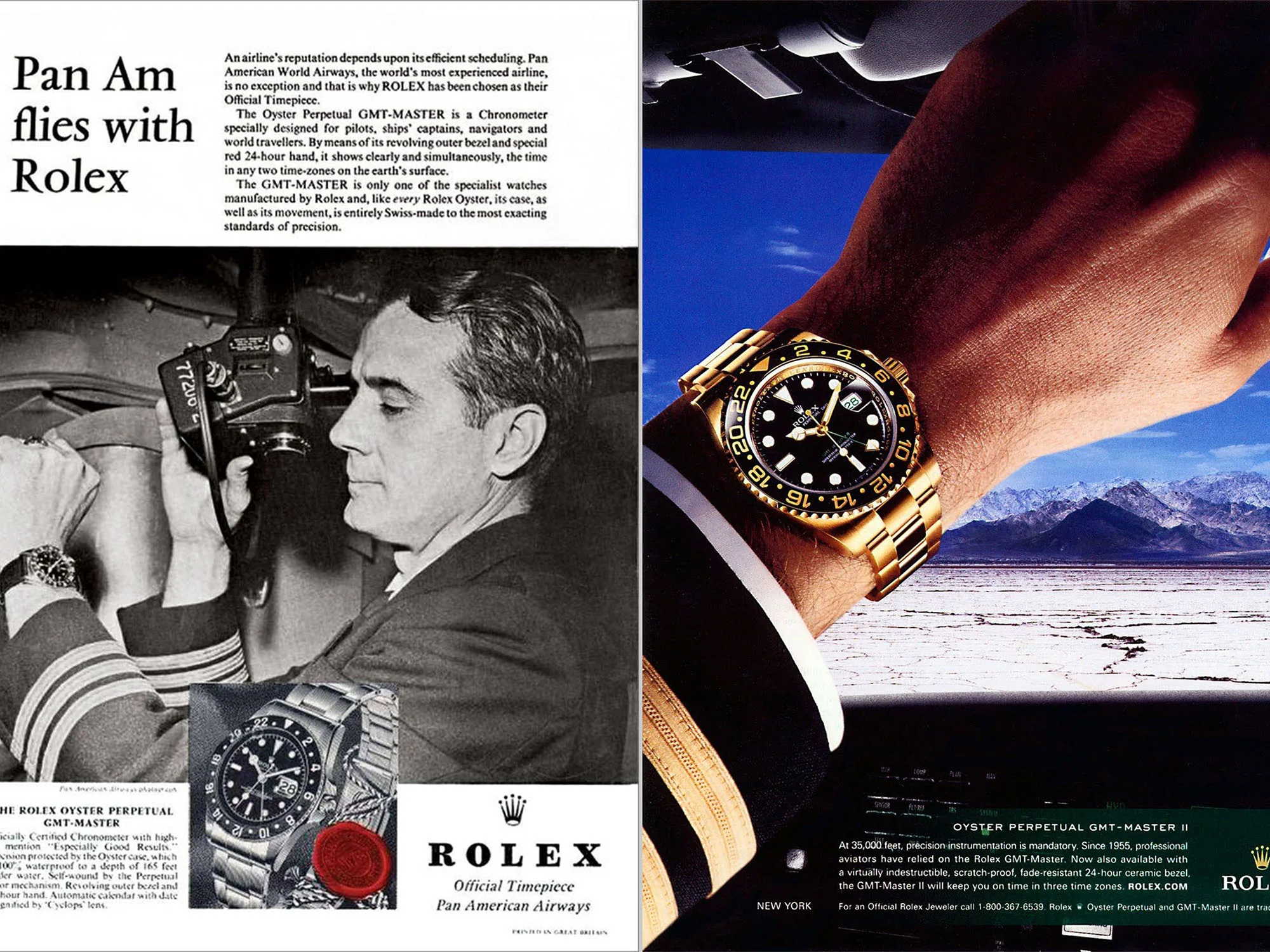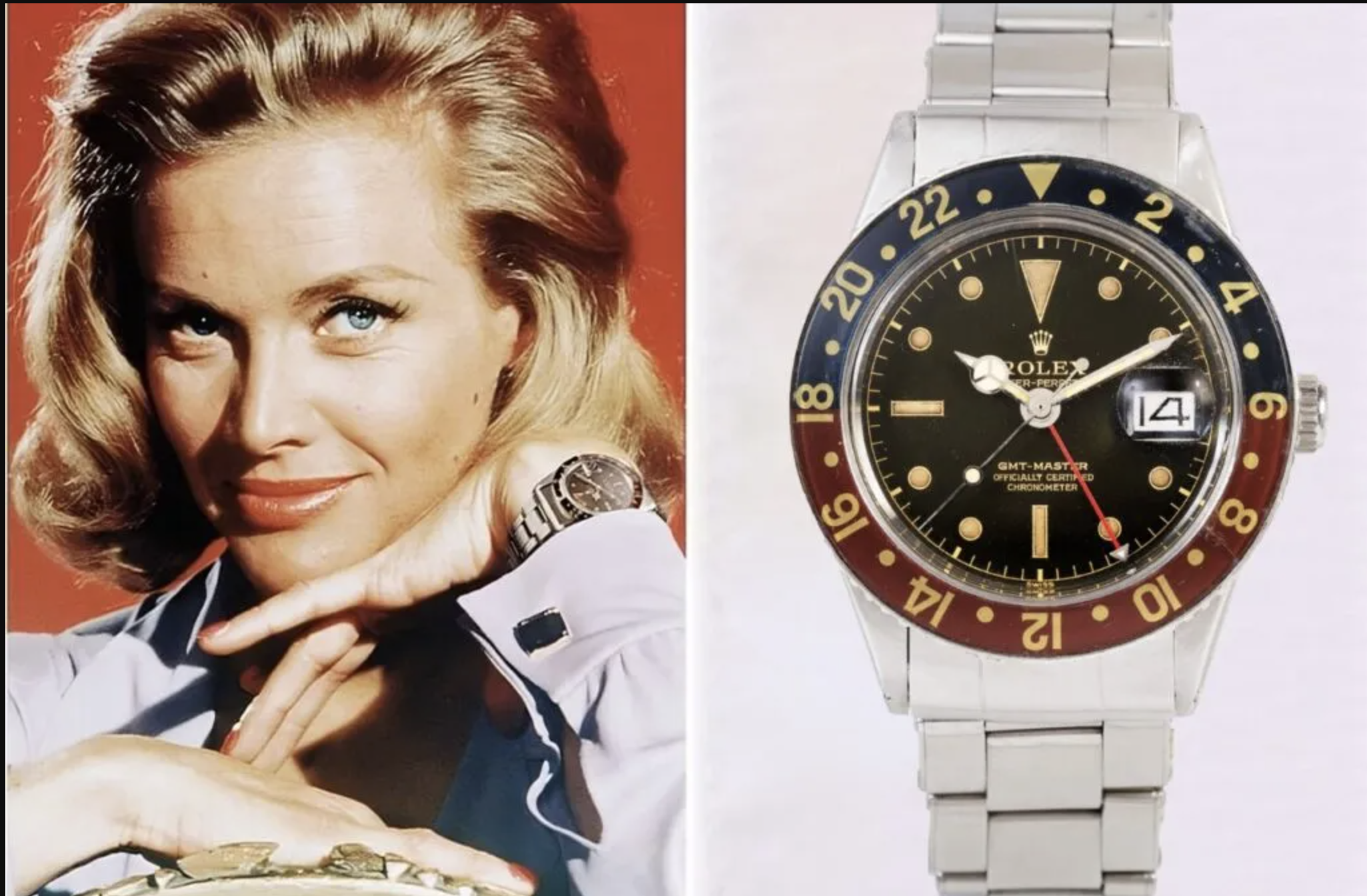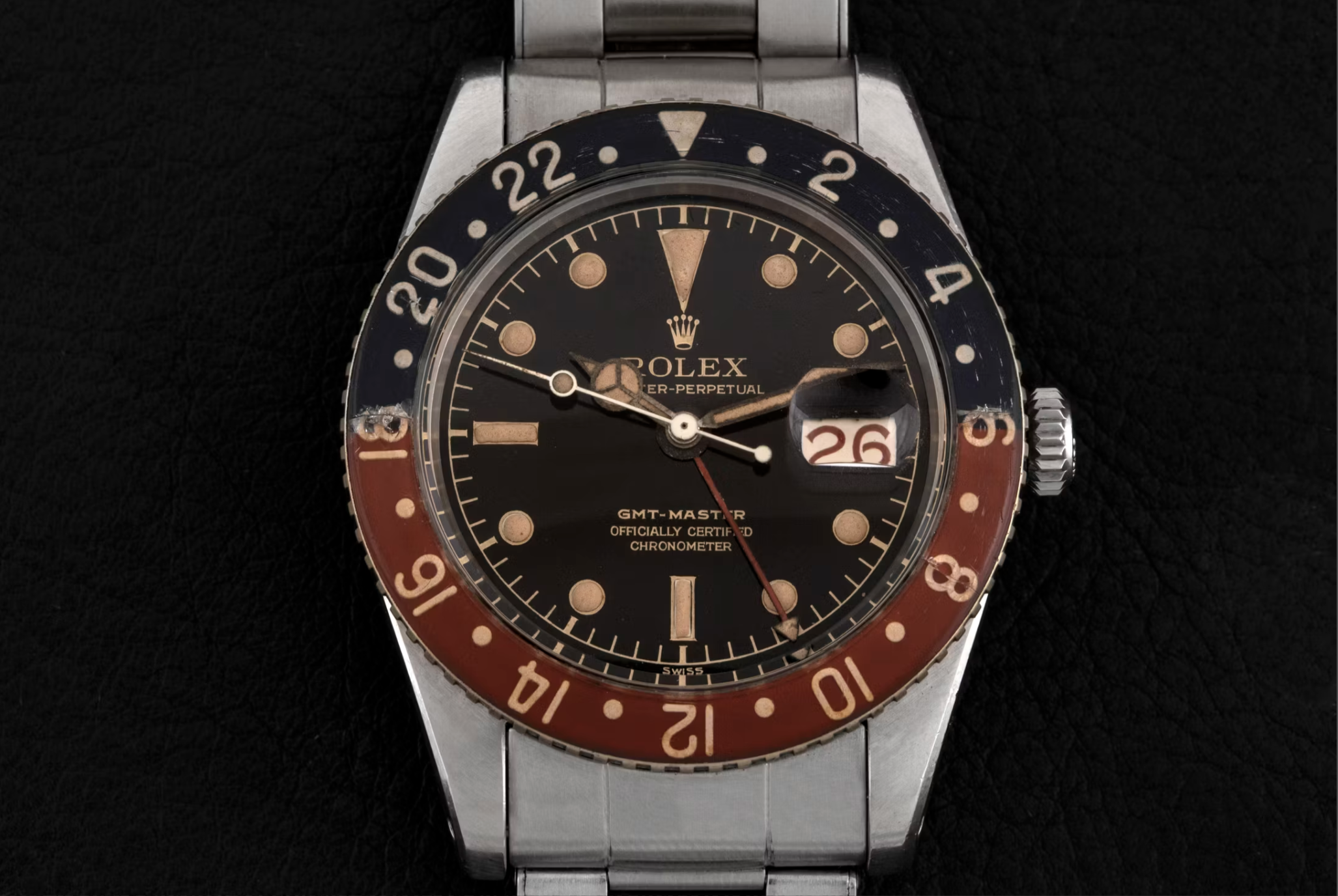
Wristcheck’s Guide To The Rolex GMT-Master (Part 1)
We deep dive into the evolution of the Rolex GMT-Master, one of the most coveted travel watches from Rolex
If it ain’t broke, don’t fix it. It’s an old cliché but a saying that holds true for so many iconic designs of the 20th century. I might have said this before (a few times!), but hold a 1959 Gibson Les Paul guitar next to a 2024 model and the untrained eye will see few differences. It’s the same in many ways with the Porsche 911, all the hallmarks over the decades remain because enduring style doesn’t need that much tweaking. Look back at the 1950s and the introduction of the GMT Master. The reference 6542 was housed in an Oyster case, had a red and blue bezel, black glossy dial and Mercedes-pattern hands. The 2024 version? Still keeps all those signatures, in an up to date execution, but that classic aesthetic endures. In fact, the steel Pepsi GMT-Master 2 is arguably the most in-demand sport watch from the hallowed brand. And it’s a great story with many chapters, so let’s take a deeper look.
The story begins in the mid-1950s with the debut of the Rolex reference 6542, encased in the iconic Oyster case measuring 38mm across, fitted with a 6mm screw-down crown. Looking back, it's clear to see that this was a pioneering sports watch from the brand, laying the foundation for years to come. The 6542 featured a three-piece case structure: the mid-case holding the movement and dial, fitted with a bezel ring that secured the acrylic crystal, and sealed with a screw-on back. This ingenious assembly, paired with the screw-down crown, allowed the Oyster case to be water-tight, promising resilience not just to mere splashes but to the pressures at depths reaching 100 metres.
The launch of the GMT-Master heralded two novel features in Rolex’s sports watches, that though they may seem commonplace now, were big news at the time. The first was a subtle yet significant addition – the cyclops lens, Rolex's term for the date magnifying bubble that had made its first appearance in 1953 on the Datejust series. The second feature was the practical and innovative dual time zone capability. This function became an indispensable asset for pilots and globe-trotters alike, simplifying the way they kept track of time across various time zones. It was particularly beneficial for commercial pilots, for whom time is a critical factor. Recognising this need, Pan American Airlines, or Pan Am, sought Rolex's expertise to create a timepiece tailored for the needs of their pilots. This collaboration is believed to have been instrumental in the creation of the GMT-Master and it was a partnership that was widely used in period Rolex advertisements.
To make the watch a two-time zone tool, Rolex went to work on its workhorse movement as a base calibre. Calibre 1030 was modified to include the 24-hour hand and was given the new calibre reference number 1065. This was a fully chronometer rated movement where the 24-hour hand completed one full rotation every 24 hours and the bidirectional bezel could be rotated to allow the wearer to monitor the home time once they had adjusted their watch to local time or vice versa.
This first series of GMT-Master features all the hallmarks of vintage Rolex sports watches that collectors love. Front and centre are the gilt dials. These were manufactured using a galvanic process where the text is actually the brass base plate of the dial showing through the black gloss lacquer dial surface. Whilst originally deep glossy black, over the decades many change colour and turn different shades of brown, from dark chocolate to light caramel. Known as tropical dials, each one is unique and special, and collectors just can’t get enough!



As I mentioned at the beginning of this piece, the eye-catching red and blue bezel was there from the very beginning of the GMT-Masters life on the 6542. The blue half was for night hours (18:00 to 06:00) and the red half, daytime hours (06:00 to 18:00). The blue and red part of the bezel was an insert manufactured from bakelite, a very brittle material that was incredibly delicate in the opposite way that the modern ceramic inserts are pretty much impossible to break. Due to the precarious nature of these bezels that were held in the steel bezel ring, it was commonplace to replace them with more robust aluminium inserts at service. Additionally, the bakelite bezels had luminous markers that were filled with the highly radioactive radium. In the early 60s Rolex began switching to tritium and began a programme of switching out the bakelite bezels. Therefore, the combination of the insert’s fragility and radioactivity meant that very few survived and so finding a 6542 with an original insert is a rare find. Although, I wouldn’t advise checking the radiation level with a Geiger counter if you are of a nervous disposition!
One interesting element about Rolex sports watches is the fact that they made them in gold. With the Submariner, the watch was a true tool of the trade and safety device for those doing beneath the waves and so a steel watch made sense. With the GMT-Master, however, the era of air travel in which it was released was full of glamour and occasion and so a gold GMT-Master was the perfect wrist accessory for the Captain or the business man in First Class. And so, in addition to the steel 6542 there was also a yellow 18k gold version. Sharing the same case proportions as the steel watch, the gold version also had a bakelite bezel but instead of the ‘Pepsi’ colour scheme it was all brown and was the perfect match to the brown dial and gold hands. The hands were not of the Mercedes pattern hands style seen on the steel version, but a more elegant and dressier version more commonly seen on Datejusts and Day-Dates. The dials also featured applied hour markers in yellow gold with small luminous dots in the middle; now known as ‘nipple dials’.

In 1959, Rolex introduced the updated GMT-Master, the reference 1675, which was produced until around 1980. It boasted a modified 1530 series movement, known as the calibre 1565 in the GMT-Master. Notably, this model featured new crown guards and a slightly larger 40mm case, available in both stainless steel and 18k yellow gold. The gold version initially came without crown guards, offering a sleeker look. The 1675 also standardised the use of an aluminium bezel insert, with the fan-favourite 'Pepsi' colours for the steel and a brown insert for the gold. Collectors have noted that two variations of crown guards existed in the 1675 – the earlier, sharply pointed guards, known by their Italian nickname ‘cornino’ and the later, rounded ones as seen on Submariner cases from the mid-1960s onwards. Maybe recognising that the vibrant Pepsi bezel wasn’t for everybody, in the early 70s Rolex introduced an all-black insert for the steel 1675.
Always striving to move forward, but in a way that doesn’t rock the boat too hard, Rolex gently expanded the GMT-Master family in the early 1970s. For those who want a little more lux with their tux, but don’t want to dive straight into the pot of gold at the end of the horological rainbow, two-tone, or Rolesor as Rolex term it, is a great option. The steel and yellow gold reference 1675/3 was available in two versions, firstly a brown dial with half and half brown and gold bezel insert and also with a black dial and all-black insert. The former, with brown and gold insert, is what collectors refer to as the ‘Root Beer’ and featured the ‘nipple’ dial.

As technological advancements came to the fore, in the late 1970s and early 80s, Rolex began updating all their lines in what we now call the transitional era. The introduction of sapphire crystals, quick set date functions and a move back to glossy dials but with luminous filled white gold applied hour markers all were introduced during this time. The sports watches that got these makeovers were the GMT-Master, Submariner and Explorer 2, however not all the lines had them all introduced at the same time. For example, the Explorer 2 got all three in reference 16550 but the 16800 Submariner initially got the quick set date function and sapphire crystal but for a few years still had a matte dial. The GMT-Master reference 16750 was introduced in 1979 and had only the quick set date function at first. The matte dials were eventually phased over to the white gold surround hour markers dials but interestingly it was never fitted with a sapphire crystal. Collectors prefer the early 16750s with the matte dial and these watches command a premium over the later versions with glossy dial version.

In Part 2 we will lift the lid on the second generation of the dual-time sports watch, the GMT-Master 2.



